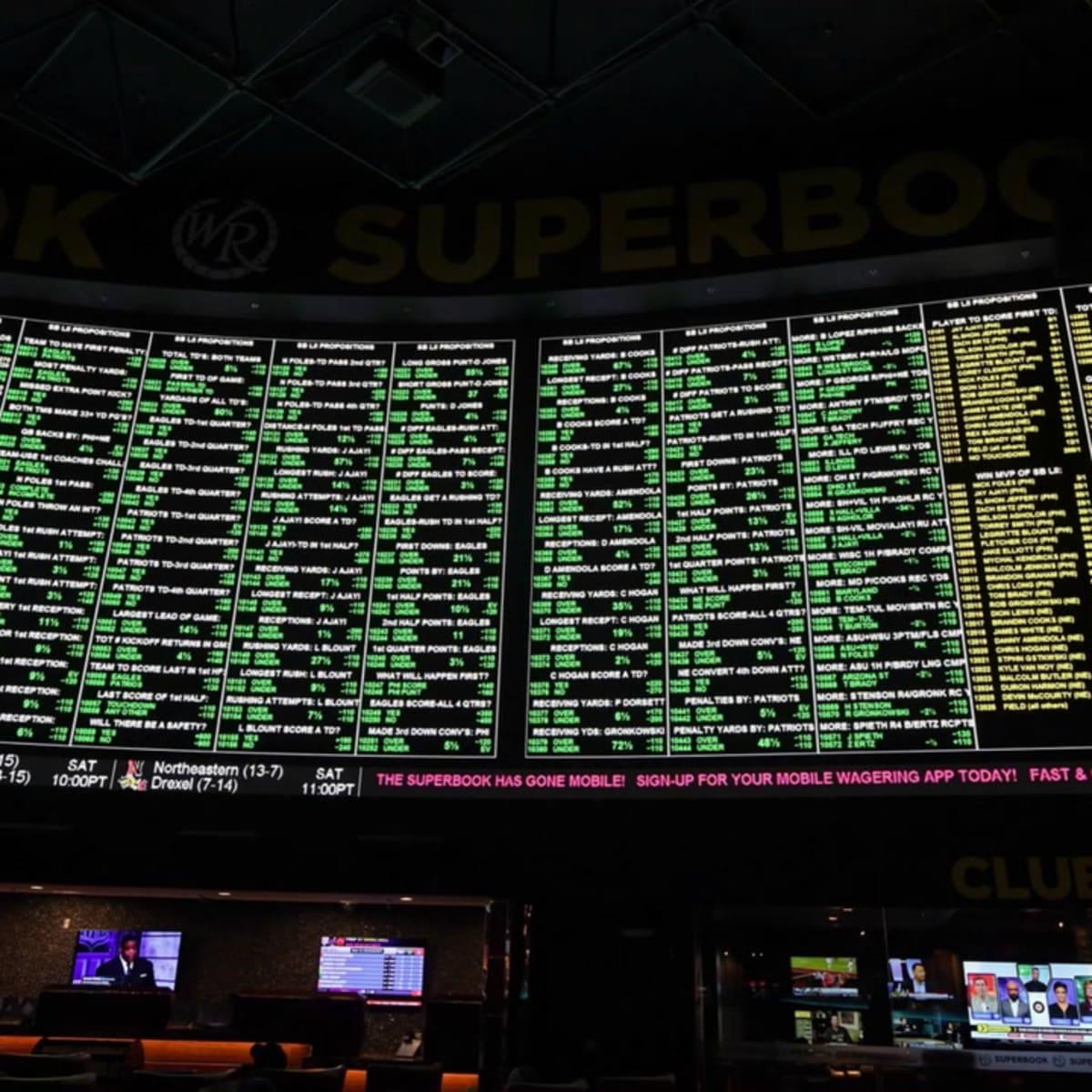Sportsbook Promos
How To Read Sports Betting Odds

Written by: Daniel Collins
Last Updated:
Read Time: 7 minutes

What in the world are Sports betting Odds?
You have decided to put a little money down on a sports bet.
Maybe you have a hunch about a game, or you have heard some interesting news that could affect the outcome of NBA game going on tonight.
Or you read a piece here on Betting News and like a bet we talk about 😉
Whatever the reason, we are excited that you are ready to take the plunge into the world of sports betting.
Now, you have read some of our reviews, and have chosen the sports betting sites or apps that is right for you.
You signed up at one of these online sportsbooks, deposit some cash and head to the sports betting page.
What happens next may be intimidating for some, as there are odds and random numbers posted all over the page.
Some in-play odds, as well as futures bets, are listed, and the overall experience can be frightening.
Well, you’ve come to the right place so take a deep breath and we will break it down for you.
The first thing you have to understand is how to read the odds, so you know exactly what your risk will be in making any particular wager.
Different Betting Odds Explained
Let’s look at the main categories of sports betting odds.
Now, we are going to break these down into their basic forms.
American Odds

If you live outside of Europe, and especially if you live in North America, these are the odds you are most likely going to encounter when looking to place a bet.
These odds are built for the major North American sports but can also apply to sports that are more popular around the rest of the world.
There are two types of American Odds that can be used for wagering: The Money Line and the Point Spread.
We have a full page dedicated to the differences, but here is quick overview:
- Toronto Raptors – 155
- Utah Jazz +135
This is the money line, which basically means that in order to win $100 you would need to bet $155 on the Raptors.
If you wanted to bet on the Jazz, the underdog, you would receive $135 back on a $100 wager.
This is a bet to pick the winner of the game regardless of the final score.
The point spread for the same game might look like this:
- Toronto Raptors -7.5
- Utah Jazz +7.5
In this scenario, you don’t have to risk more to win back the same $100 on each team, but you do have to take or lay the points.
For example, if Toronto wins the game by 3 points, then the bets on Utah +7.5 would be a winner.
For Toronto to win the bet, the Raptors would have to win by 8 or more points.
Decimal Odds
Decimal Odds are more likely to be found in European-focused sportsbooks and are the primary method for people who are betting on soccer.
They can also be applied to other sports including those in North America.
If we use the same basketball game as the example, these would be the likely odds for the game:
- Toronto Raptors 1.45
- Utah Jazz 2.05
To calculate the return, it is as simple as multiplying the amount of your wager by the odds on the team you have chosen.
So, for a $100 bet, you would receive $145 back if the Raptors win and $205 if the Jazz win.
It is a very simple formula, and much like the money line, it only matters who wins the game.
Soccer lines also feature odds on a tie, and Decimal Odds are a tidy way to display the risk for taking a draw in any game.
Fractional Odds

Fractional odds are very popular in the UK and Ireland, and these days the majority of pari-mutuel wagering (horses, dogs, etc.) use Fractional Odds.
These are also very easy to calculate, as you are using the two numbers to determine your return.
Let’s look at a couple of horses to demonstrate how these odds work.
- Justify 1 / 2
- Any Old Horse 10 /1
In Fractional Odds betting, the second number is the number you would wager, and the first number is the amount you would receive in return.
For these two horses, the odds are very different. If you want to bet on Justify, you would need to bet $2 to return an additional $1 in winnings for a total of $3.
If you bet on the other horse, you would receive $11 back for every $1 bet (your original $1 and the $10 from the 10/1 odds).
What Did You Learn?
As you can see, all three types of sports betting odds get you to the same place.
Now, there can be small pieces of value by using one set of odds over another, but realistically most books now move all the lines at the same time.
If you are still a little confused or simply have a preference of lines, have no fear.
Sportsbooks don’t show all the different odds for each game, with most simply allowing you to toggle between the different types of odds so you can work with the set you feel the most comfortable with.
Now that you have an understanding of the different odds types, it is time to jump in and start betting!
Check out some of our other Betting guide pages to help you navigate everything you need to know about a sportsbook.
Feel free to get in touch with us on Twitter if you have more questions or want to get more sports betting information under your belt.
You can never be too informed when it comes to your wagers, and here at Betting News, we are here to help you!
Summary of “How To Read Sports Betting Odds”
Different Types of Odds: Where They Shine in Sports
American odds:
Used in North America, with favorites having negative (-) odds and underdogs having positive (+) odds. You need to risk more money to win $100 on a favorite and win more money for every $100 wagered on an underdog.
- Baseball, MLB Odds: Underdog team with +1400 odds (you win $1400 for every $100 bet) pulls off a surprise upset against the heavily favored team.
- Football, NFL Odds : Game goes into overtime after a 7-7 tie, resulting in a “push” where all bets are refunded as neither team covered the point spread.
- Basketball, NBA Odds: Star player gets ejected early in the game, causing their team with -5.5 odds to lose by a narrow margin, meaning any bets on them covering the spread would lose.
Decimal odds:
Used in Europe and for soccer betting, with the odds directly representing the potential payout for a $100 bet. A higher number indicates a lower chance of winning but a higher payout.
- Tennis Odds: Long shot player with odds of 10.00 (a $100 bet would win you $1000) defeats the world number one in a stunning first-round victory.
- Soccer Odds: Match ends in a 0-0 draw, with the “draw” outcome having odds of 3.25, meaning a $100 bet would net you $325.
- Cricket Odds: A bowler takes all ten wickets in an innings (a rare feat) with odds of 25.00, leading to a massive payout for anyone who correctly predicted it.
Fractional odds:
Used in the UK and Ireland, with the first number representing the amount you win and the second number representing the amount you bet. For example, 5/2 odds mean you win $5 for every $2 wagered.
- Horse Racing Odds: An outsider with odds of 20/1 (you win $20 for every $1 bet) charges from behind to win the race, surprising the heavily favored horses.
- Golf Odds: Player makes a hole-in-one on a par-4 hole with odds of 7/1, leading to a significant payday for those who backed them to achieve that improbable feat.
- Rugby Odds: Match ends in a tie with a score of 12-12, with the “draw” outcome having odds of 13/2, meaning a $2 bet would return $16.
Frequently Asked Questions
Free Betting Picks




